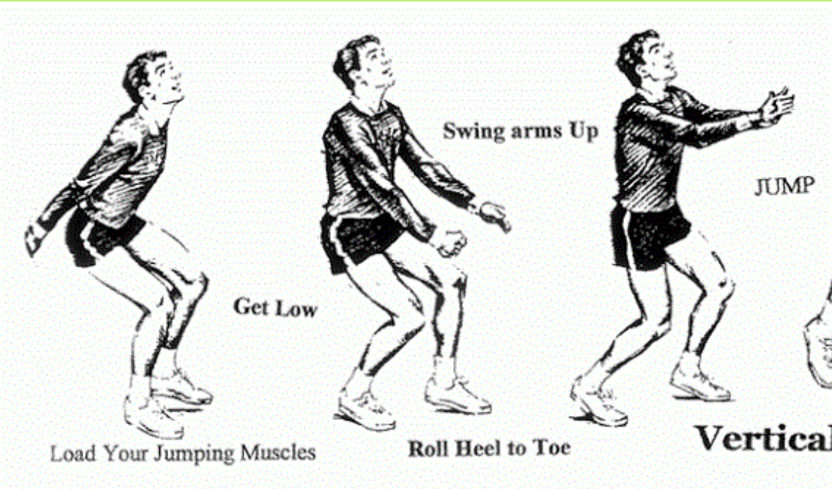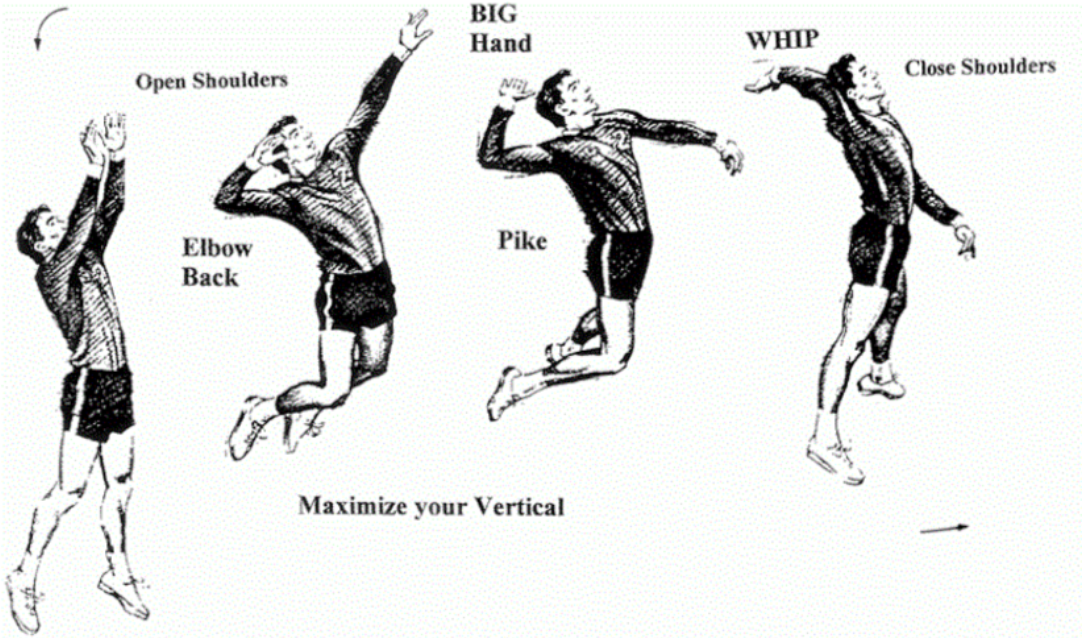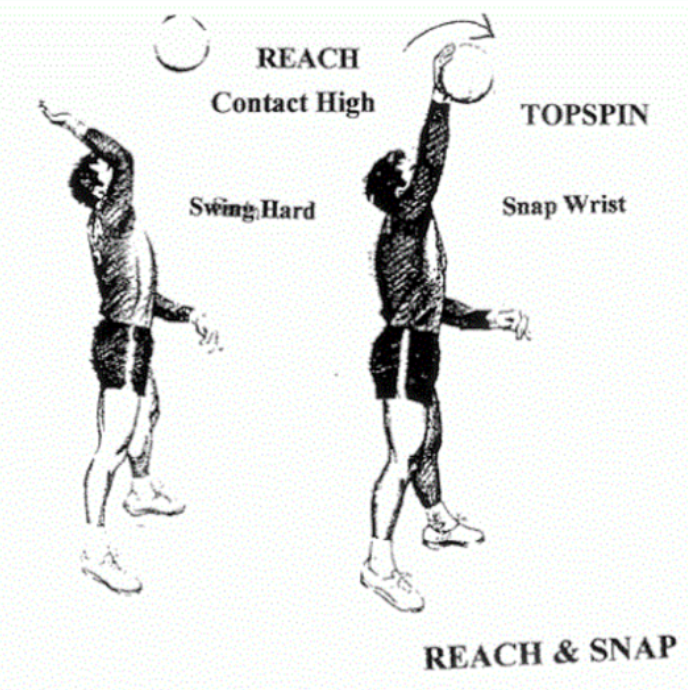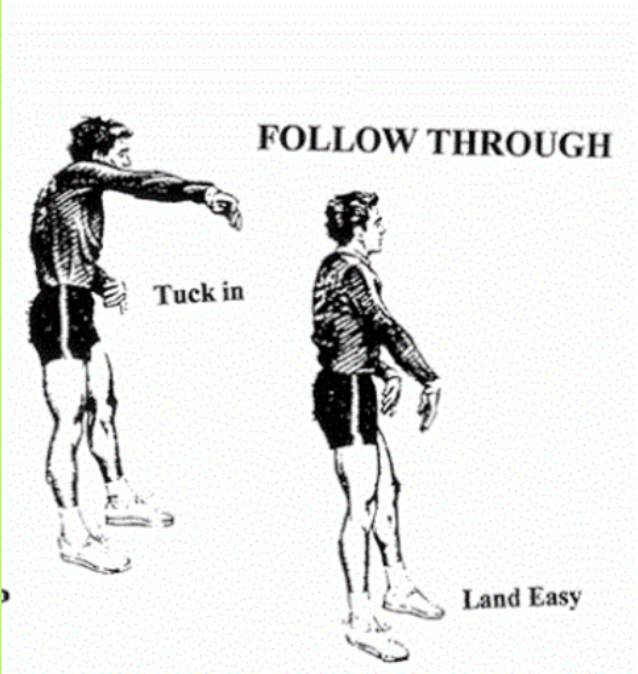The process of human functioning is a highly sophisticated matter that has been constantly studied by scholars of various fields, as it represents a combination of social, physical, mental, and biomechanical endeavors. Thus, one of the major sciences related to the notion of human physical activity is the process of human kinetics and kinesiology. The term itself stands for a series of scientific approaches for the examination of human movement and functioning (BCAK, 2020). In order to define the peculiarities of human kinetics in the example, the following paper is aimed at analyzing the anatomic features of the physical process of conducting a volleyball spike. As there are four major phases of the move, each of them will be examined on the matter of joints involved, activities performed, and axes, and planes of movement.
Phase 1. Preparation/Run-Up
The depiction of the following phase looks as follows:

In the process of the preparation for the swing, it is of crucial importance to engage maximum muscles and joints in order to gain beneficial momentum, which stands for the mass-velocity paradigm. Thus, among the anatomic aspects involved in the process of preparation, there are:
- Knee extenders
- Knee joint
- Ankle joint
- Gluteus maximus
- Shoulder joint
- Shoulder girdle
- Elbow
- Trapezius
- Anterior/Posterior Deltoids
- Triceps (Smith et al., n.d.).
It might be outlined from the picture that during the very process presupposes bilateral hand movement, but the leg movement is alternate, i.e., the muscle action is similar for both right and left leg, but one of the commences the movement whereas other follows suit. During the preparation stage, the muscles undergo all types of contraction, as at the very beginning, the contraction is isometric in nature, as the muscles remain with no movement. Later, along with the first steps, the muscle fibers begin to lengthen and shorten in series due to rapid movement within the space. Although each body part plays a crucial role in the overall process of a volley spike preparation, the most crucial muscles include the biceps, trapezius, gluteus maximus, and posterior deltoids.
When considering the process from the perspective of division for the primary movement groups, the steps include shoulder extension, trunk, hip, and knee flexion, with latissimus dorsi, rectus abdominis, psoas, and biceps femoris being the prime movers, respectively (Smith et al., n.d.). Among the existing plane and axis of movement, the preparation phase is characterized by the sagittal and frontal axis. Moreover, the importance of the following stage is also related to the fact that the person is to build up both horizontal and vertical momentum in order to produce kinetic energy that would restrain the body from stopping during the spike.
Phase 2. Loading Phase
The next phase of the jump is directly correlated with focusing on the lower body parts responsible for extension in the vertical momentum, and it looks as follows:

The major anatomic constituents used in the phase include:
- Knee extenders
- Hip flexors
- Gluteus maximus
- Calf
- Shoulder joint
- Shoulder girdle
- Latissimus dorsi
- Elbow
- Trapezius
- Deltoids
- Triceps (Smith et al., n.d.)
The process of movement is mostly bilateral, as the muscle load is allocated symmetrically on all the body parts. The flexions important for the following phase encompass shoulders, hips, and trunk, with anterior deltoid, psoas, and rectus abdominis being the prime movers of action, respectively. The plane of such movement is sagittal, and the axis remains frontal. The types of muscle contractions presuppose both isometric and isomorphic contraction during the process. Unlike the previous phase, the kinetic movement here mostly concerns vertical momentum as the player is to swing enough to produce a high jump.
Phase 3. Jumping/Cocking Phase
During the following process stage, the attention is paid exclusively to the upper body parts, and it looks as follows:

The anatomic structure of the following process includes:
- Shoulder joint
- Shoulder girdle
- Elbow
- Anterior/posterior deltoids
- Biceps
- Triceps
- Latissimus dorsi (Smith et al., n.d.)
The nature of the movement is not bilateral, as the working arm and shoulder are responsible for the action, and the muscle contractions are isotonic, whereas the other side of the upper body does not presuppose any tension, and the muscles are, then, isometric. The major groups of movement in the process are shoulder and elbow flexion and shoulder external rotation. The prime movers are the anterior deltoid, brachialis, and infraspinatus, respectively. When it comes to the notions of plane and axis, the process of vertical momentum maximization consists of two aspects. The very process of jumping is in the sagittal plane and frontal axis, whereas the action of torso rotation and movement is displayed in the transverse plane and vertical axis. However, the lower body actions, including hip and knee flexion, are also present in the process at the very beginning of the jump, as the biceps femoris and gluteus maximus play a primary role when maximizing the height of the jump itself.
Phase 4. Strike Phase
The strike phase is also primarily focused on the movement of shoulders and elbows, and it might be represented as follows:

As the strike phase is primarily concentrated on the process of interaction with the ball, it is of crucial importance to engage with the joints of the wrist and shoulders in order to secure a good result. Thus, the anatomic constituents of the phase include:
- Shoulder joint
- Shoulder girdle
- Elbow
- Anterior/posterior deltoids
- Biceps
- Triceps
- Latissimus dorsi
- Pectoralis major
- External oblique (Smith et al., n.d.).
The situation with tension allocation within the body is similar to that of the jumping phase, as the major focus is placed on the side that is doing the action directly. When it comes to the actions, the movements of the upper body, including internal shoulder rotation, shoulder extension, and elbow extension, should be outlined in terms of significance. The prime movers of these actions are the subscapularis, latissimus dorsi, and triceps, accordingly. The lower body actions encompass trunk, hip, and knee extension with latissimus dorsi, gluteus maximus, and quadriceps serving as prime movers. The muscle contraction for all the body parts is isotonic. Finally, the axis of the action is frontal, and the plane of movement is sagittal.
Phase 5. Follow-Through/Landing Phase
Finally, the last part of the movement presupposes a secure ball tock in and safe jump landing, looking as follows:

In order to return conduct a satisfactory performance and land safely on the ground, it is of paramount importance to engage with all the body parts. The anatomic constituents of the performance include:
- Shoulder joint
- Shoulder girdle
- Elbow
- Deltoids
- Quadriceps
- Hamstrings
- Hip flexors
- Gluteus maximus
- Calf
- Anterior tibial (Smith et al., n.d.).
As the following phase consists of two major processes, each of them should be examined on the matter of actions and prime movers. To begin with, the follow-through stage, responsible for the process of throwing a ball successfully over the net, requires much effort from the upper body. The actions here include shoulder and elbow extension, with latissimus dorsi and triceps playing a crucial role. The final stage of the endeavor, however, is highly dependent on the movement of the lower body, presupposing trunk, hip, and knee extension. The prime movers are, thus, the erector spinae, latissimus dorsi, gluteus maximus, and quadriceps. The muscle contraction is isotonic for both aspects, and the landing movement is bilateral in nature. The plane of the action is sagittal, and the axis is frontal. Once the action is finished, the act of human kinetic is over, and the process itself will become static again.
Taking everything into consideration, it might be concluded that the act of volleyball spike is, by all means, one of the most vivid examples of the importance of human kinesiology and awareness of the anatomy. In terms of the following paper, it was estimated that the process of spike consists of five major phases that engage both upper and lower body parts. Some of the prime movers frequently outlined in the process concern triceps, gluteus maximus, latissimus dorsi, deltoids, and shoulder joints.
References
Biomechanics of a volleyball spike. (2015). [Image]. Web.
British Columbia Association of Kinesiologists (BCAK). (2020). Kinesiology and human kinetics. Web.
Smith, C. (n.d.). Volleyball spike. Web.